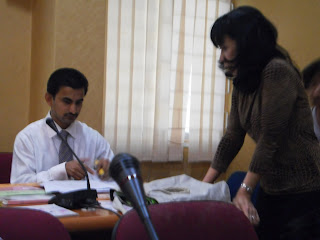Breast cancer usually begins either in the cells of the lobules, which are milk-producing glands, or the ducts, the passages that drain milk from the lobules to the nipple. The pathology report will tell you whether or not the cancer has spread outside the milk ducts or lobules of the breast where it started.
Non-invasive cancers stay within the milk ducts or lobules in the breast. They do not grow into or invade normal tissues within or beyond the breast.Non-invasive cancers are sometimes called carcinoma in situ (“in the same place”) or pre-cancers.
Invasive cancers do grow into normal, healthy tissues. Most breast cancers are invasive. Whether the cancer is non-invasive or invasive will determine your treatment choices and how you might respond to the treatments you receive.
In some cases, a breast cancer may be both invasive and non-invasive. This means that part of the cancer has grown into normal tissue and part of the cancer has stayed inside the milk ducts or milk lobules. It would be treated as an invasive cancer.
A breast cancer also may be a “mixed tumor,” meaning that it contains a mixture of cancerous ductal cells and lobular cells. It would be treated as a ductal carcinoma.
If there is more than one tumor in the breast, the breast cancer is described as either multifocal or multicentric. In multifocal breast cancer, all of the tumors arise from the original tumor, and they are usually in the same section of the breast. If the cancer is multicentric, it means that all of the tumors formed separately, and they are often in different areas of the breast.
In most cases, you can expect the breast cancer to be classified as one of the following.
- DCIS (Ductal Carcinoma In Situ): DCIS is a non-invasive cancer that stays inside the milk duct.
- LCIS (Lobular Carcinoma In Situ): LCIS is an overgrowth of cells that stay inside the lobule. It is not a true cancer; rather, it is a warning sign of an increased risk for developing an invasive cancer in the future in either breast.
- IDC (Invasive Ductal Carcinoma): The most common type of breast cancer, invasive ductal carcinoma begins in the milk duct but has grown into the surrounding normal tissue inside the breast.
- Less Common Subtypes of Invasive Ductal Carcinoma can include tubular, medullary, mucinous, papillary, and cribriform carcinomas of the breast. In these cancers, the cells can look and behave somewhat differently than invasive ductal carcinoma cells usually do.
- ILC (Invasive Lobular Carcinoma): ILC starts inside the lobule but grows into the surrounding normal tissue inside the breast.
- Inflammatory Breast Cancer: Inflammatory breast cancer is a fast-growing form of breast cancer that usually starts with the reddening and swelling of the breast, instead of a distinct lump.
- Male Breast Cancer: Breast cancer in men is rare, but when it occurs, it is almost always a ductal carcinoma.
- Paget’s Disease of the Nipple: Paget’s disease of the nipple is a rare form of breast cancer in which cancer cells collect in or around the nipple.
- Phyllodes Tumors of the Breast: Phyllodes tumors are rare breast tumors that begin in the connective tissue of the breast (stroma) and grow quickly in a leaflike pattern. Some are cancerous, but most are not.
- Recurrent and/or Metastatic Breast Cancer: Breast cancer that has returned after previous treatment or has spread beyond the breast to other parts of the body.








































